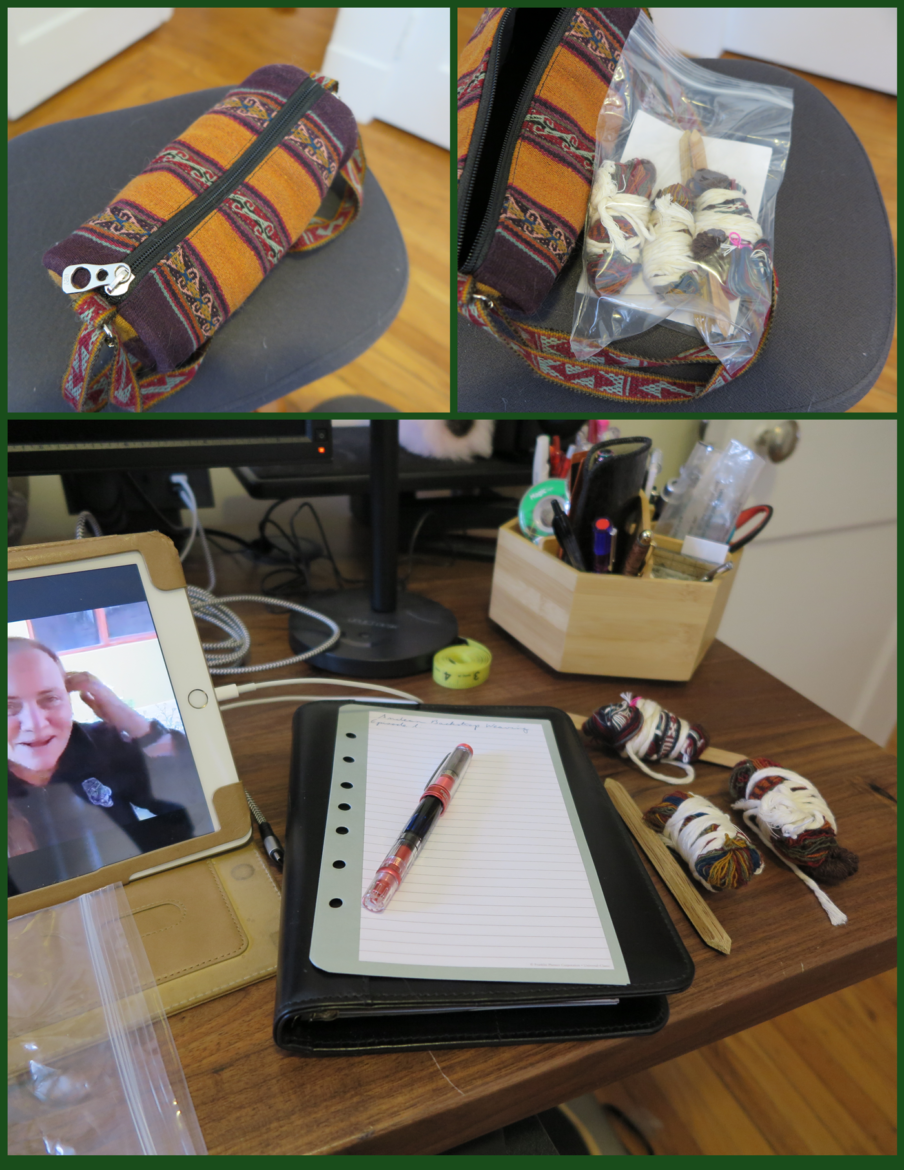Back in December I gave myself a Christmas present of signing up as a monthly sustaining member of Franquemont University – Abby Franquemont’s online classes. Much of my motivation was that throughout February they would be running the Andean Backstrap weaving course for members only. I also put in my order for my pre-made looms and… maybe a few other treats. I should warn you – there is NICE stuff on that website. You might want to hide your credit cards when you visit.
Obviously, since I said this course ran throughout February, week 1 was a few weeks ago now, but sorry! I’ve been having too much fun doing to write about doing. Better late than never, right?
This is the first time they have run the class online, so the format has been modified a bit on the fly. Initially the plan was class each Saturday for four weeks, with office hours Tuesdays and Thursdays. They decided to kick of class early with Abby using the Thursday office hour slot to teach each weeks’ materials. Then her adjunct teacher, Cat, would repeat the same material on Saturday. Each class is recorded and made available to us after they’ve gone through and cleaned up the recording, as well as added subtitles. Thus, for the first week I was able to watch the Thursday recording on Friday, and then join class live on Saturday.

Class 1 started with unpacking the first of the looms we’d each purchased and setting it up. We were very carefully instructed not to unwrap anything before the first class. This was so they could walk us through the pieces in an orderly fashion. It’s not because things are that delicate. In fact, now that I can sort it out on my own, I can take it off and toss it in a heap on my desk! As you can seen from the pictures below, it’s a loom which definitely doesn’t take up a ton of space in the apartment.

Abby and Cat are teaching everything using the Quechua words for the loom parts as well, so while I have a few translations I could do in my head, my lack of previous weaving means I’m not heavily committed to those. So for now, it’s a “my mini” rather than “my weft” or “my shuttle” (there isn’t a wooden shuttle – just a tiny skein of fluffy yarn).
The only weaving we did week 1 was a simple plain weave, which produces stripes. This is because it’s warp faced – ie only the warp threads show in the final product. These threads are arranged on our looms so that it’s all the dark color or all the light color depending on which half of the threads are raised. Plain weave is called “khata”. We were not allowed to advance beyond where we could reach on the warp.

When we got too far to comfortably weave further, we were instructed to unpick our weaving and do it again. This was to ensure we’d have warp left to work on for week 2, but also because it’s a good practice to understand what you are doing and get more practice in without having to have new looms set up. It seems kind of like learning to read your knitting so you can drop back and fix mistakes.
I put in a few extra hours throughout week 1 weaving and unweaving until things started to feel pretty fuzzy. In certain ways, I am at a slight advantage over a few folks because I have never woven before, so I’m only fitting the Andean terms, parts, and motions into what I know of weaving in the most general way. I don’t have any ingrained feel for how the warp and weft should behave which I need to unlearn. At the same time, weaving is brand new for me. I would find I was extremely hungry and tired after class or practicing for a bit because my brain and body are working harder on something new. And it is physical work, though it’s not going to get you any body builder awards. You are moving your torso back and forth to adjust tension, and trying not to bend over too cramped-like while changing the threads.

All in all, I was pretty excited (as were most in the class) to get to week 2 and starting to learn how to do patterns…
